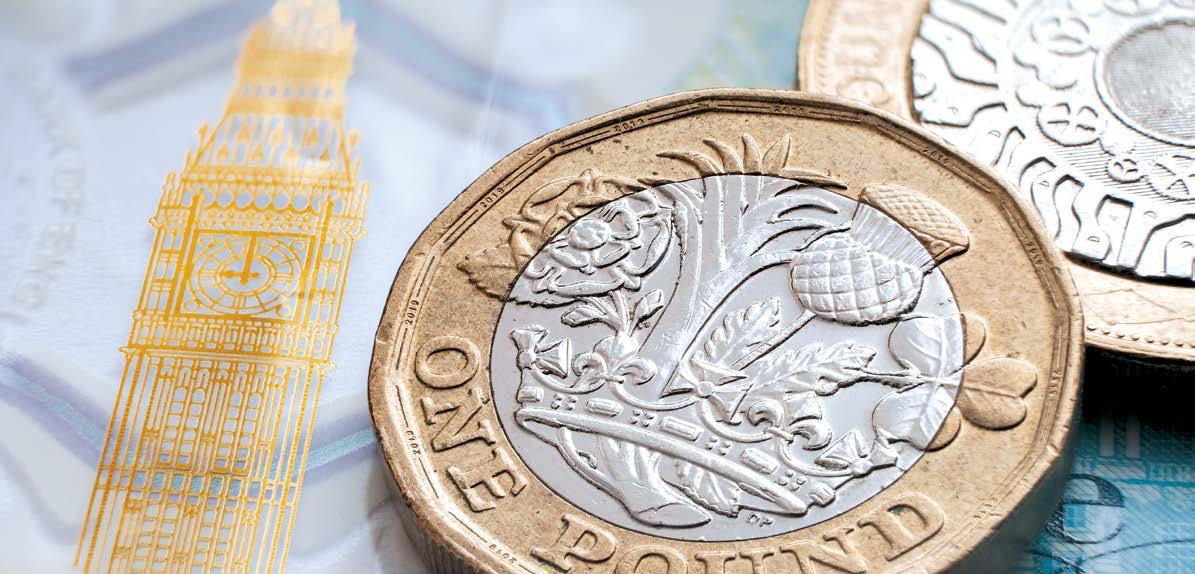
11 minute read
Students
Taxation UK examination
This article has been written for candidates who are preparing to sit the Taxation UK exam in November 2022.
The Taxation UK exam has a practical focus. In each question, you are put in a position in which a tax accountant might find themselves in the real world. To answer these scenario-based questions successfully, you must apply your tax knowledge to the particular facts of the scenario.
To be successful in this exam, you must be able to:
● calculate different UK taxes;
● use the permitted tax tables;
● advise on practical aspects of tax; and
● recognise ethical issues when working on tax matters.
1. Calculate different UK taxes
Answers are predominantly numerical. You will be asked to calculate many different taxes or taxable amounts.
Prepare and practise
When studying, make sure you are clear which rules relate to which tax, and to which entity – individuals, individuals acting in partnerships, or companies. Unsuccessful candidates often confuse taxes or entities.
Test yourself by trying to list for a particular tax – who pays it, on what, at what rates, and what reliefs are available?
The best way to learn, understand and apply the rules is to practise lots of questions. Merely reading the Workbook is not enough – you need a more active way to study. In the exam, you will be presented with blank pages for your answers, with no pro formas, so you must know how to approach the relevant computations without prompts.
However, the exam is structured with many requirements which may sometimes break down the computation into different steps. In a single question, you may need to use your answer from one part when answering a subsequent part.
Computation layout and approach
We look at corporation tax in Example 1: Calculating corporation tax. The computation of each tax has a different layout and approach. You should make sure you are confident in each approach and have practised working through it. Some devolved nations within the UK have slightly different taxes or rules – be careful to perform the right calculations for that location.
Pre-prepared computations
You may be presented with a computation that has been started or completed already, by a colleague or client. There will be some errors and your role as the tax expert in the scenario is then to prepare a new, correct computation.
You will need to identify and correct the errors or omissions. These will often be common mistakes. For example, a benefit that is exempt may be taxed in error. Remember the basic rules for the tax involved, and do not be misled by what has already been done. But not everything will be wrong – have the confidence to include correct figures, without change.
2. Use the permitted tax tables
Prepare and practise
To pass the exam, you need to be able to use the published tax tables successfully. This is a skill which an accountant working in tax will use frequently in their everyday work.
However, you need to prepare beforehand. During the exam itself, there will not be time to search for information that you have never looked for before. It might not even be included. The information is often given in a concise form, which you might not understand if the first time you read it is during the pressured environment of the exam.
So, while studying, make a habit of using the tax tables. For each topic in your Workbook, check the tax tables to see what information is included and practise finding it.
Administration rules
The tax tables include much useful information about administrative obligations. For each tax, you might be asked when it should be paid or the relevant returns submitted (‘the reporting obligations’), or about the penalties for non‑compliance.
If asked when, you must always give a date, month and year (see Example 2: Using tax tables for inheritance tax). If you are typing the date in a spreadsheet cell, be careful that the British format of date/month/year is displayed.
Tax rates and allowances
The tax tables give information on rates and allowances. If you have sufficiently practised tax calculations during your studies, you probably already know the rates and bands for most taxes, or can quickly check in the tables.
Example 1: Calculating corporation tax
The scenario may involve you working on corporation tax for a client. The corporation tax charge is the taxable total profits (TTP) multiplied by the corporation tax rate. So, you need to calculate the taxable total profits.
You must show separately the different sources of income and gains which make up the taxable total profits. This might include trading profits, property income, non‑trading loan relationship income or gains.
You might be asked to calculate some of these amounts in separate requirements. For example, you may be asked to calculate trading profits, requiring you to adjust a draft or accounting profits figure. Make sure that you label each adjustment, so the examiner can follow your workings. The requirement might include a specific instruction to demonstrate your treatment of each item. This means that if no adjustment is needed for a particular item, you need to show this with a label and an adjustment of zero. The examiner then knows you have thought about the treatment, rather than just left the item out. However, explanations are not required unless asked for.
But not all calculations will be prompted by separate requirements – you need to identify those needed from the information in the scenario.
When asked to calculate the corporation tax, collate all the elements of the taxable total profit, including any amounts calculated in earlier requirements, clearly labelling each. Don’t forget to calculate the tax itself, showing the rate you used.
Example 2: Using tax tables for inheritance tax
Take inheritance tax as an example. During your studies, find the information on due dates in the tax tables. Assume that a question then asks you to advise a client when to pay the lifetime tax payable on a transfer of cash into a trust on 18 November 2021.
The tax tables give information for ‘Chargeable transfers other than on death’ for various dates. For transfers between 1 October and 5 April – relevant here – the rule stated is ‘six months after end of month in which chargeable transfer is made’.
But writing this as your answer would not be enough – you need to apply the rule to advise the client meaningfully; i.e. give a date. The answer is therefore ‘by 31 May 2022’. Take care to read the rule properly. A common mistake is to count six months, but not from the end of the month of the transfer.
Example 3: The cost of a taxable benefit
A requirement in the sample exam asked for a calculation of the cost to a company of providing private fuel to an employee using a company car.
Think through the costs involved – for a start, the cost of the fuel itself. But providing private fuel is a taxable benefit, so another cost to the company, as the employer, is Class 1A NIC. So you need to calculate the taxable benefit and the Class 1A NIC thereon.
Finally, the costs of the fuel and NIC are allowable deductions for corporation tax, and so the overall cost of this proposal is reduced by the corporation tax saving on these costs.
The tax tables are particularly useful for calculating the taxes that vary slightly for the devolved nations; for example, those charged on the purchase of land and buildings. Check where the building is located and so which tax to calculate. You must then pick the correct rates and bands for that tax, depending on the building type (whether residential or not) and considering any other special rules.
Lists and other information
The tax tables include other useful information, including about reliefs and exemptions. This may help you to answer a requirement, but only if you know that the information is there.
You may see a requirement asking about three or four different items, and their treatment. This may be a clue that the information is available in the tax tables. For example, the November 2021 exam listed three payments made by a partnership on behalf of employees. Candidates had to record whether each payment was charged to Class 1 secondary National Insurance Contributions (NIC), charged to Class 1A NIC or was not charged to NIC. The tax tables contain a list of ‘Common benefits subject to Class 1 or Class 1A’ which would have helped.
3. Advise on the practical aspects of tax
Advising clients on their administrative obligations, as discussed above, is one practical aspect of tax tested extensively in the exam. Some narrative is needed in such answers but don’t give lengthy paragraphs. It is sufficient to give brief statements and the specific dates as explained above.
You also need a practical understanding that tax is a cost to a business or individual. For example, you might be asked to calculate the cost of an action which includes tax, or the after-tax income of an individual. Tax computations are needed, but you need to work out which ones, and how to use them in an overall answer.
These can be challenging questions (see Example 3: The cost of a taxable benefits) but take a moment to think through the practical scenario, and the taxes that might be involved. Don’t forget NIC. Even if you cannot work out a full answer, you may be able to perform some of the calculations and so score some marks. Remember that if you make no attempt, you will definitely score nothing. Label your calculations, so the examiner can follow your thought process.
However, don’t spend too long on any requirement – if you are struggling, make an attempt and move on. You should allocate your time in the exam across requirements based on the number of marks available. You must attempt all requirements – there should be some easier marks on offer for each.
4. Recognise ethical issues
As a tax accountant, you have duties to clients and to HMRC. This may lead to ethical issues. Ethics is tested in each exam.
Carefully read the requirement and make sure you answer the question asked. Too often, candidates’ answers suggest general wrong-doing but are not specific enough to score. If asked to identify fundamental principles or threats, give the proper terms and pick those relevant to the scenario – don’t list them all. If asked for actions, give actions, not merely a general discussion of the issue.
Finally, don’t give contradictory answers to try to cover all possibilities. For example, if asked whether a client’s action is tax evasion, give a clear answer. Too many candidates state ‘it is tax evasion’ but then lose confidence and add more in case they are wrong such as ‘but it might not be’. Such hedged answers do not score marks.
Key points to remember
Before the exam
● Practise lots of questions, under timed conditions. Don’t look at the model answers first.
● Learn and practise the approach and layout for the computation of each tax.
● Familiarise yourself with the information in the permitted tax tables.
● Study and practise applying the administrative rules for each tax: payment, reporting, penalties, etc.
● Develop your understanding of tax as a cost and a cash outflow by practising questions.
● Study ethical matters relating to tax. Practise identifying issues and applying the guidelines. During the exam
● Read the requirement carefully, particularly the command word, and answer the question asked.
● Spend the appropriate amount of time on each requirement and then move on.
● Show workings and give labels so the examiner can understand and award follow-through marks.
● Apply your knowledge and the information in the tax tables to the particular facts of the scenario.
● Remember that any attempt is better than none, so make sure you try every requirement.
The content of this article may be useful for candidates of future sittings but they should be aware that the specific tax rules change year on year.










